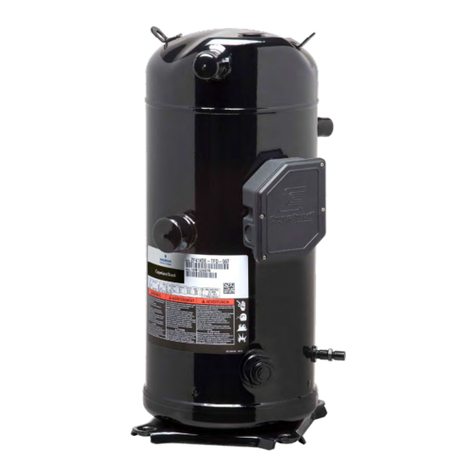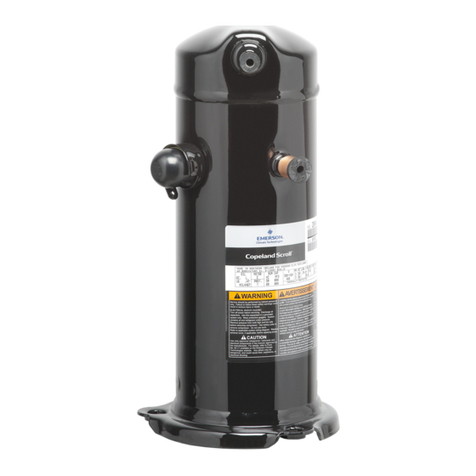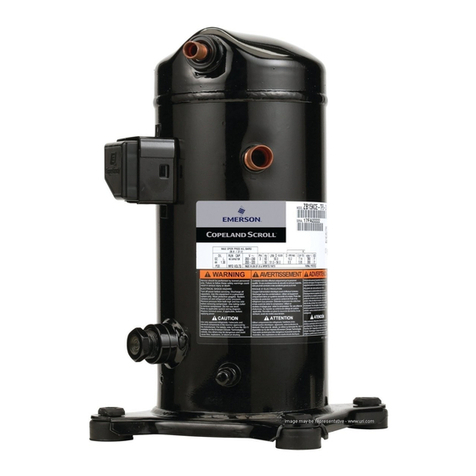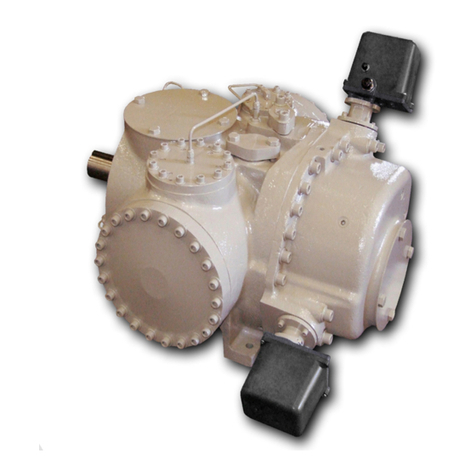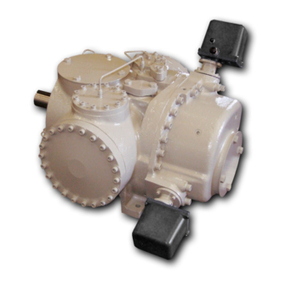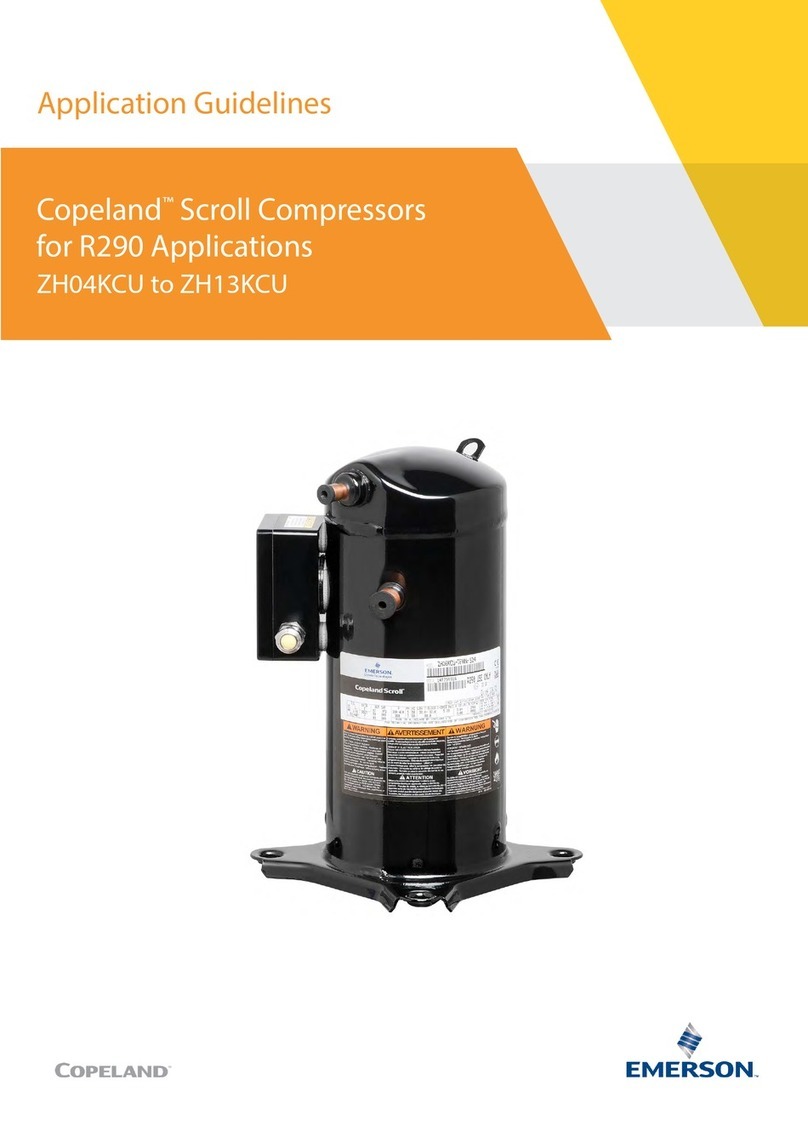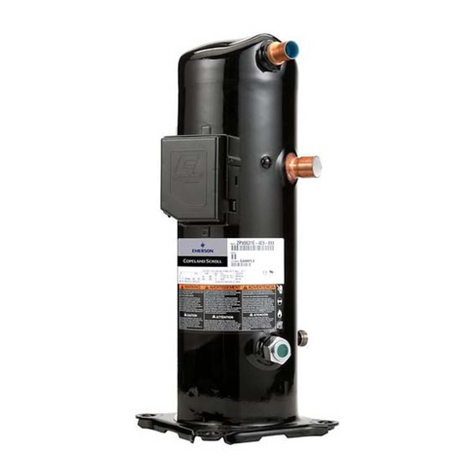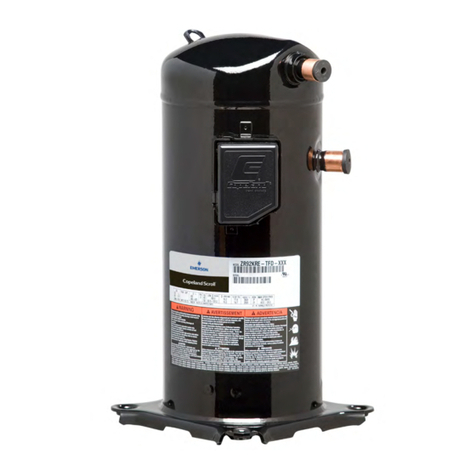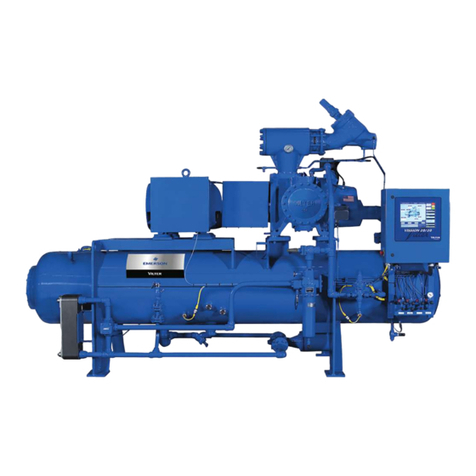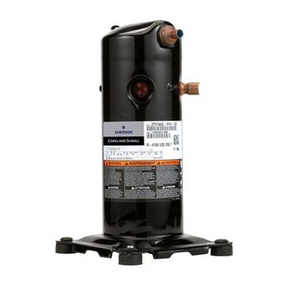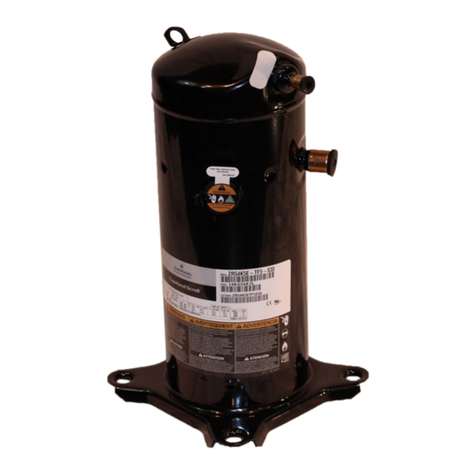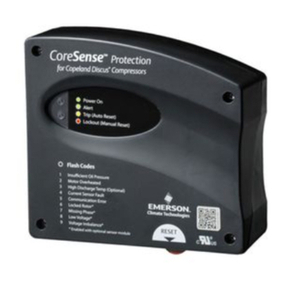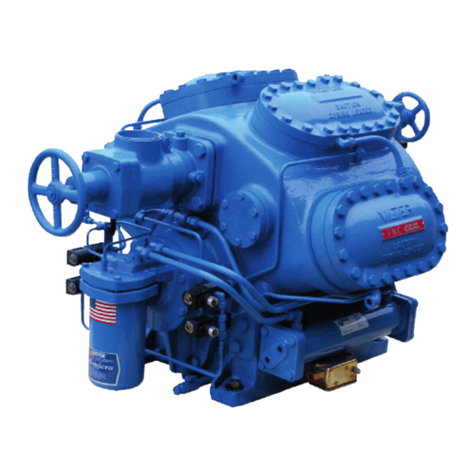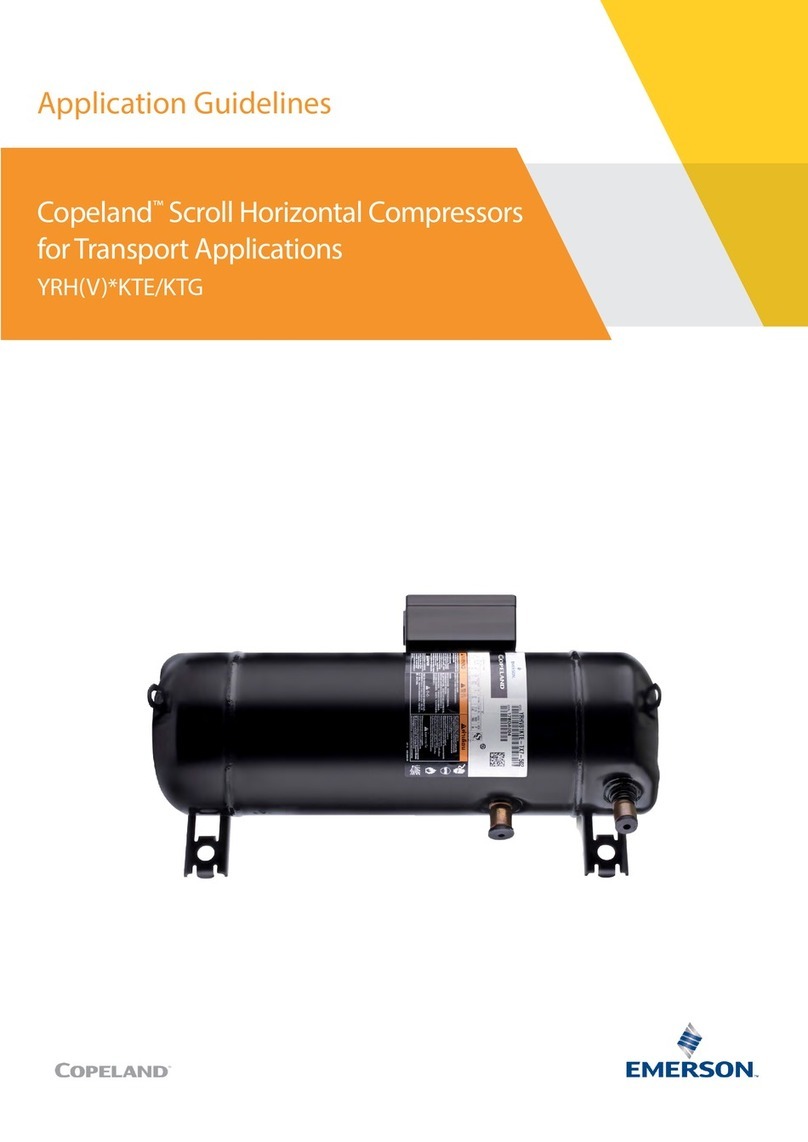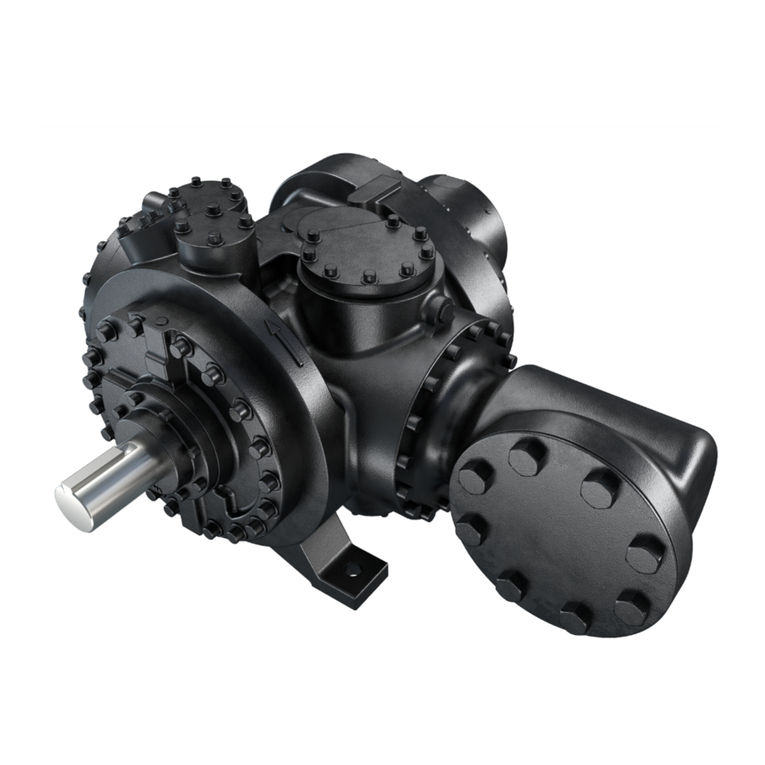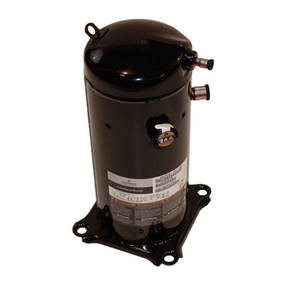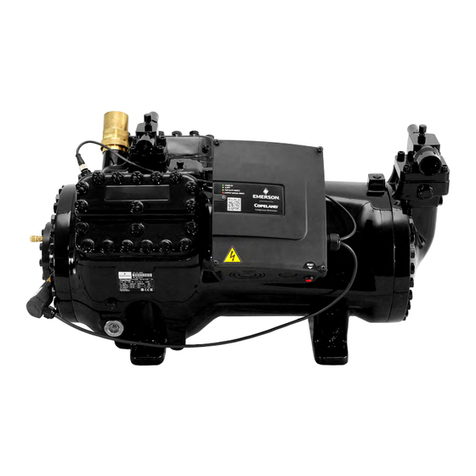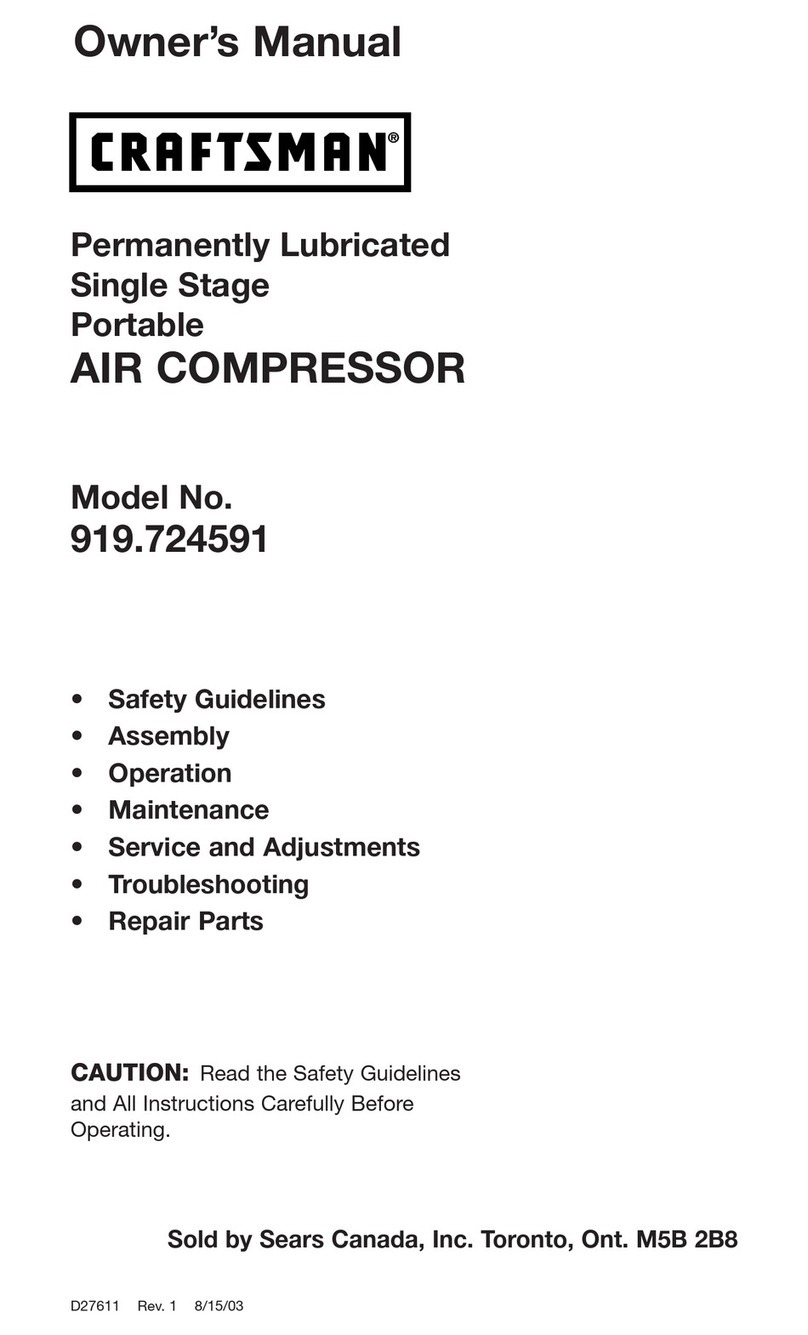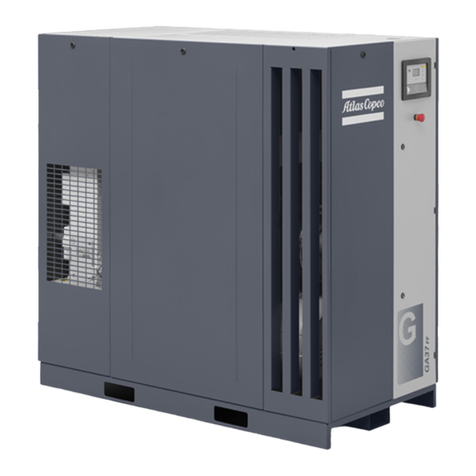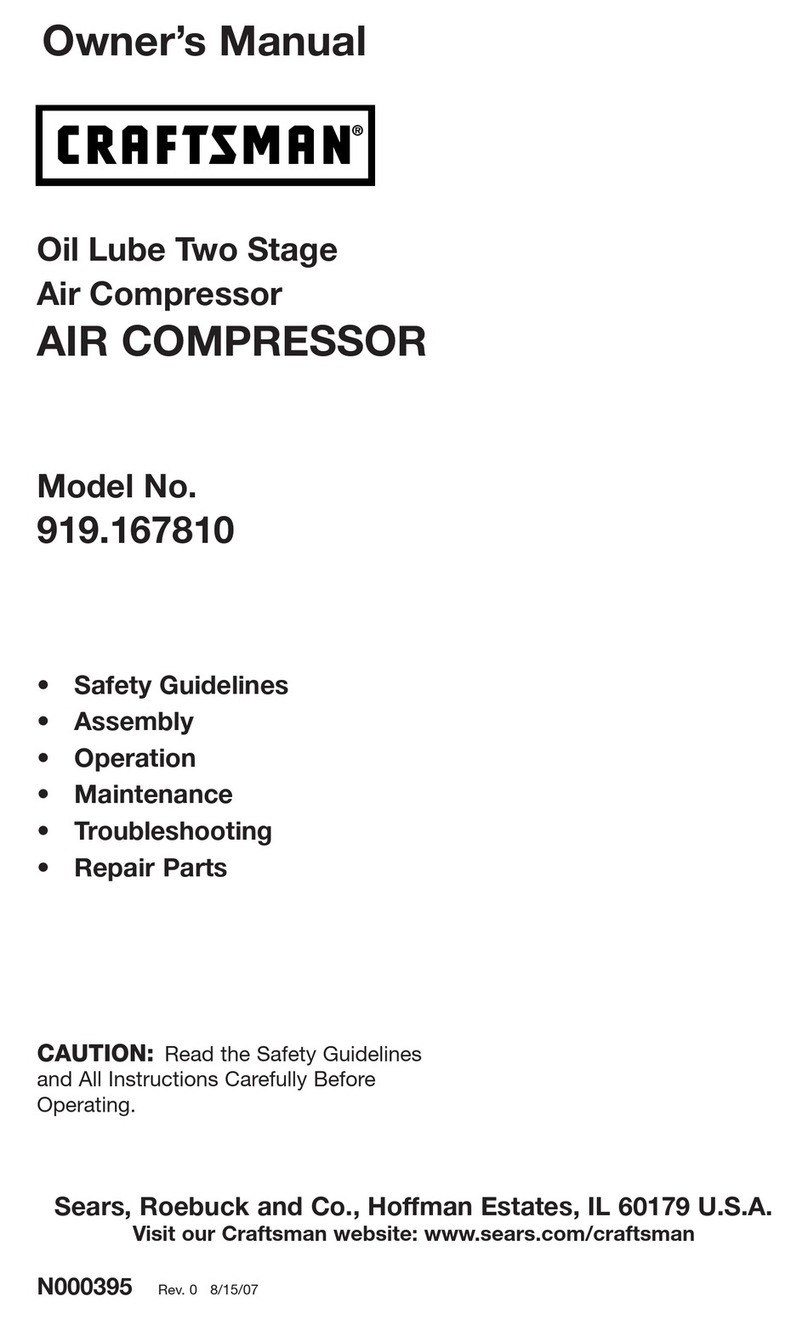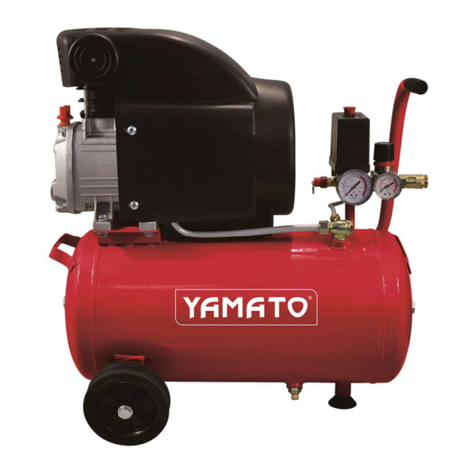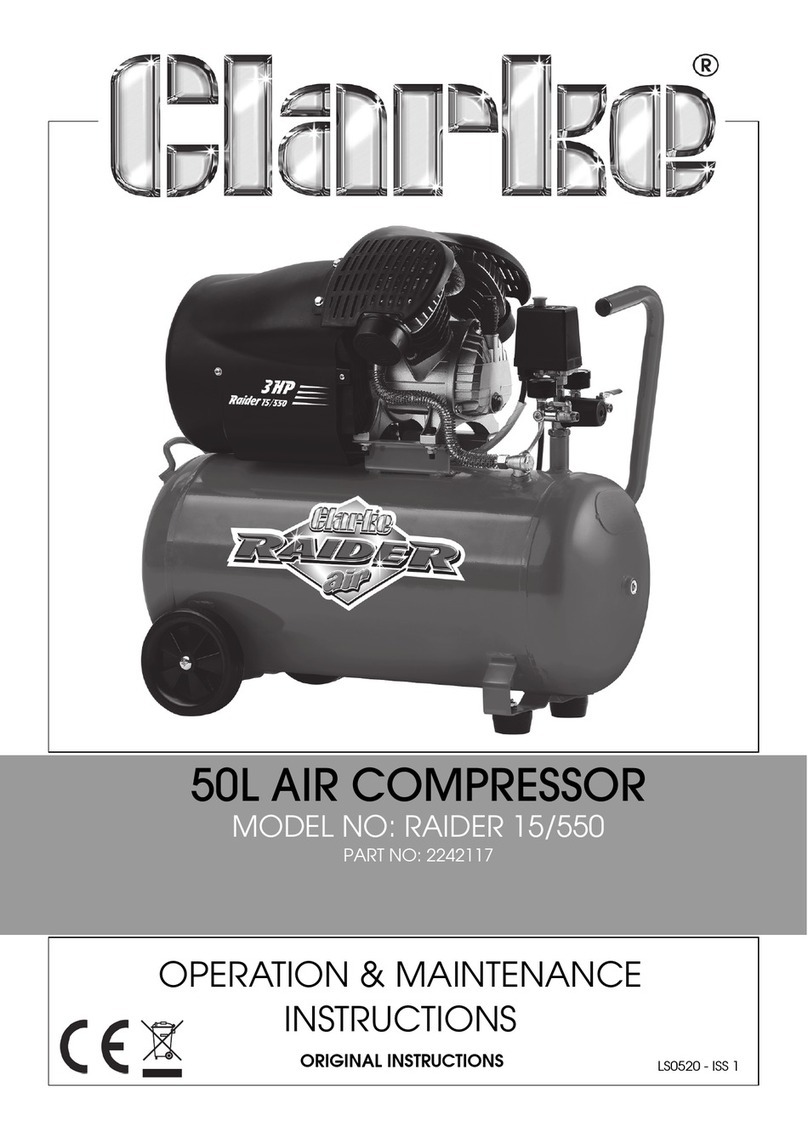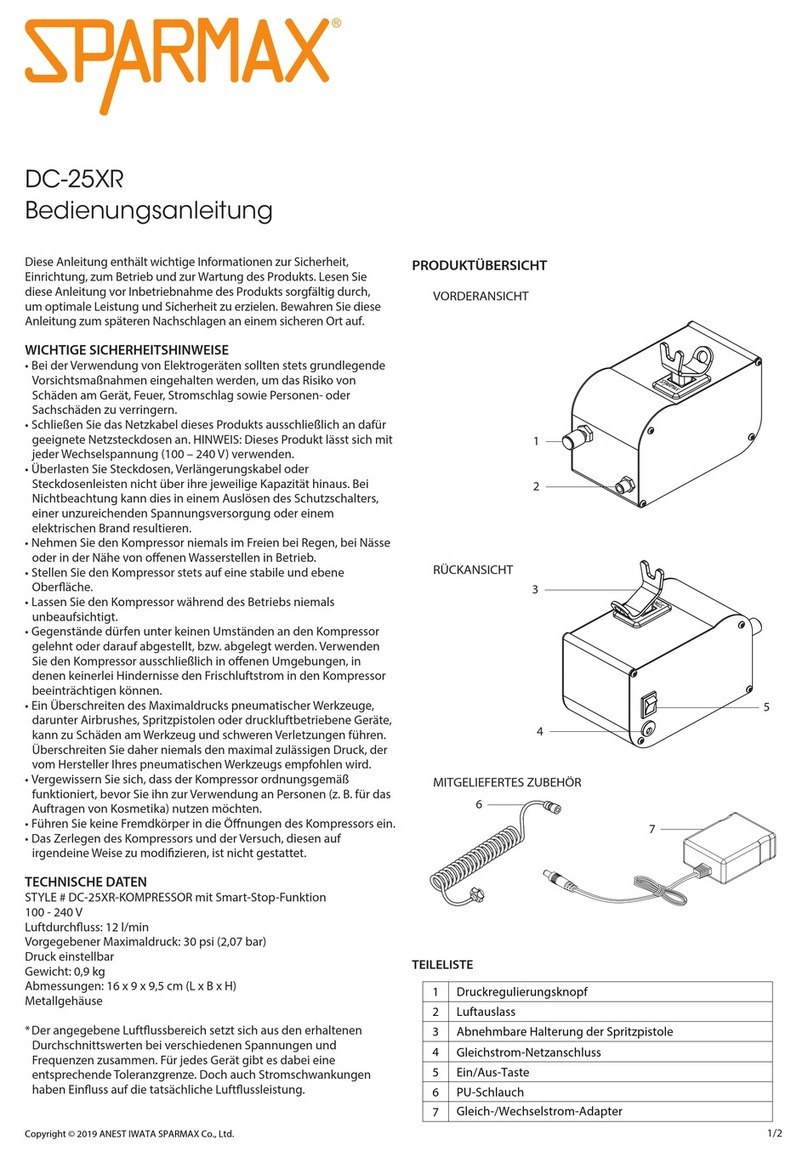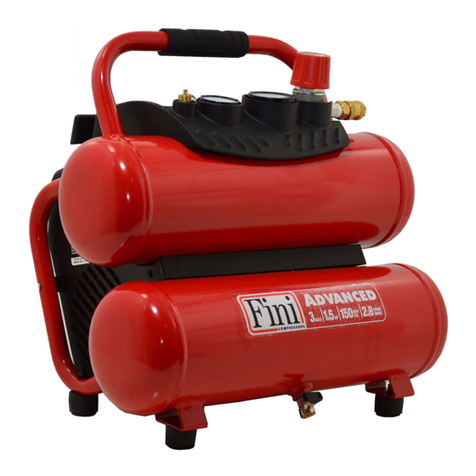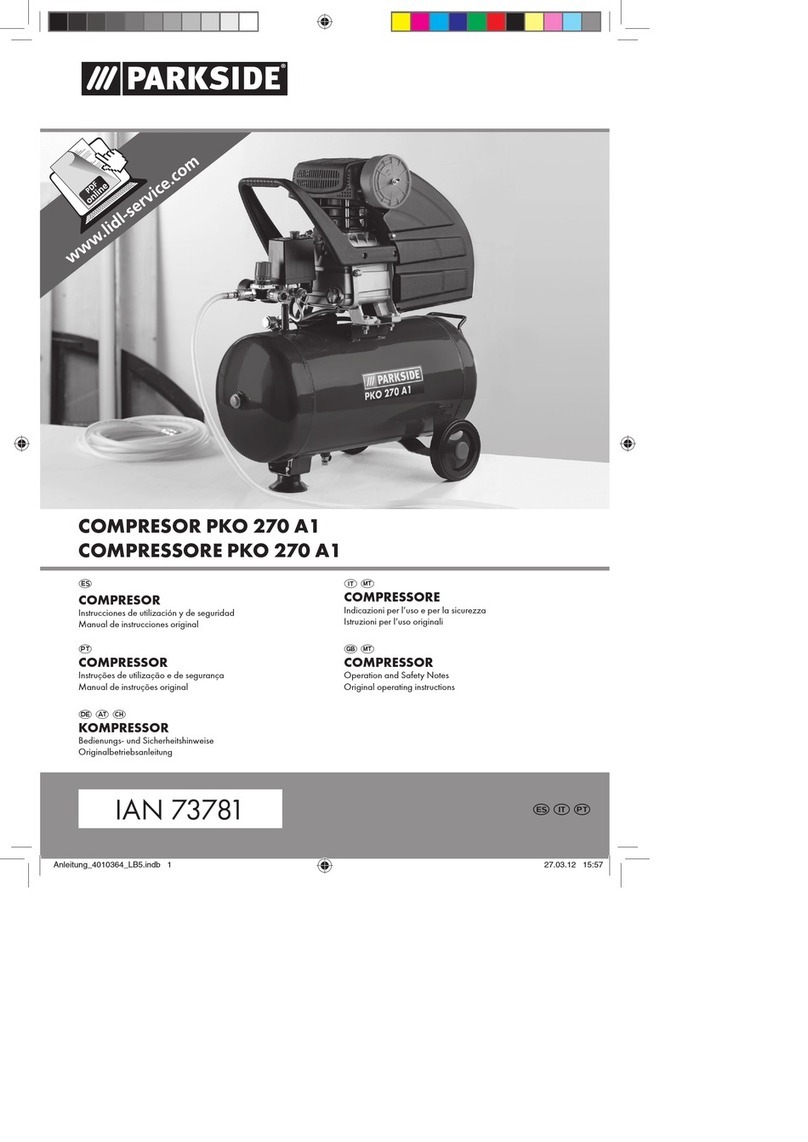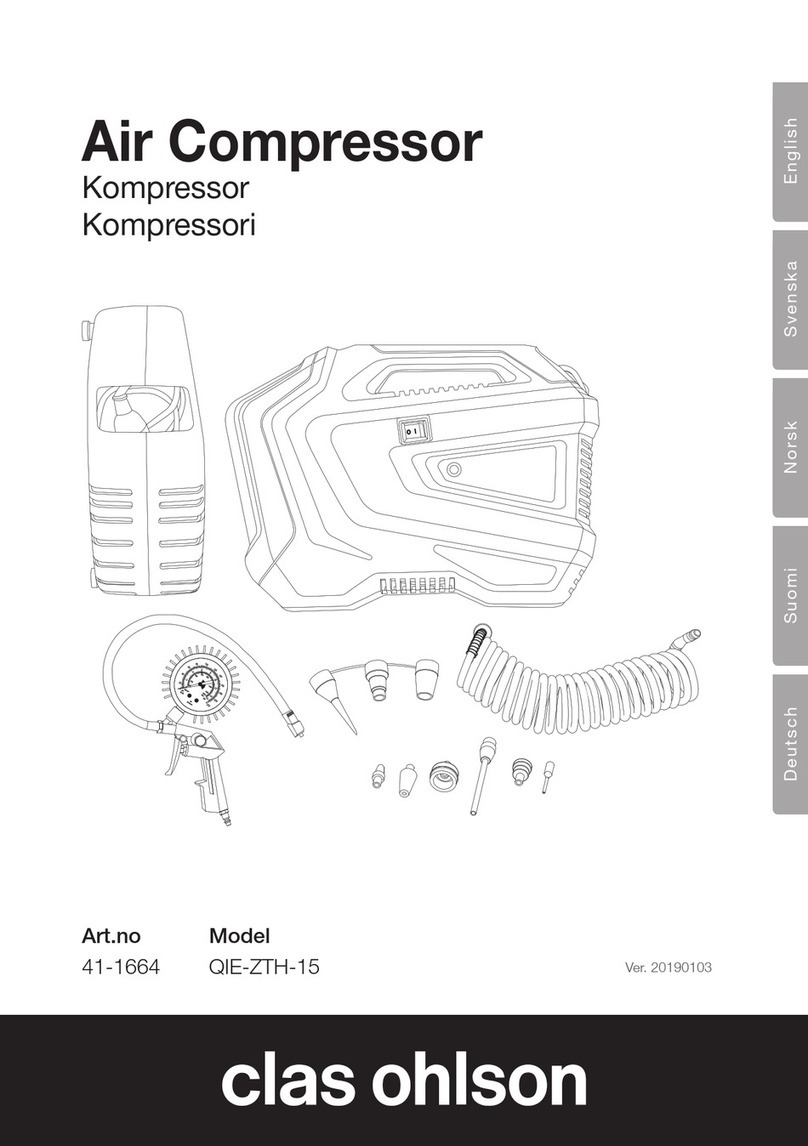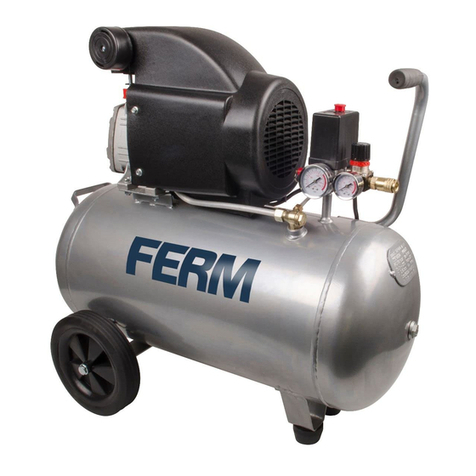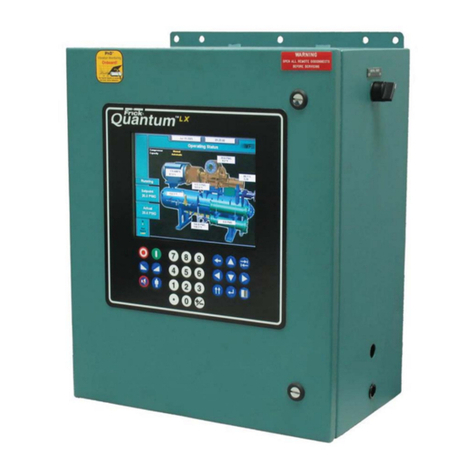Verification of proper rotation can be made by observing
that the suction pressure drops and the discharge
pressure rises when the compressor is energized.
Additionally, if operated in reverse the compressor is
noisier and its current draw is substantially reduced
compared to tabulated values.
Although operation of scroll in reverse direction for brief
periods of time is not harmful, continued operation could
result in failure.
All three-phase compressors are wired identically
internally. Once the correct phasing is determined for a
specific system or installation, connecting properly
phased power leads to the same fusite terminals will
maintain the proper rotation.
22. Brief Power Interruptions
Brief power interruptions (less than ½ second) may
result in powered reverse rotation of single-phase
refrigeration scroll compressors. High-pressure
discharge gas expands backward through the scrolls at
power interruption causing the scroll to orbit in the
reverse direction. If power is reapplied while this
reversal is occurring, the compressor may continue to
run noisily in the reverse direction for several minutes
until the compressor internal protector trips. This has no
negative effect on durability. When the protector resets,
the compressor will start and run normally.
Emerson strongly encourages the use of a timer which
can sense brief power interruptions and lock the
compressor out of operation for two minutes. A typical
timer circuit is shown in Figure 15.
No time delay is required on three phase models to
prevent reverse rotation due to power interruptions
23. Deep Vacuum Operation
Do not run a refrigeration scroll compressor in a
vacuum. Failure to heed this advice can result in
permanent damage to the compressor.
A low-pressure control is required for protection against
vacuum operation. See the section on Pressure
Controls for the proper set points. (See Table 6)
Scroll compressors (as with any refrigeration
compressor) should never be used to evacuate
refrigeration or air conditioning systems. See AE24-
1105 for proper system evacuation procedures.
24. Unbrazing System Components
If the refrigerant charge is removed from a scroll unit by
bleeding the high side only, it is sometimes possible for
the scrolls to seal, preventing pressure equalization
through the compressor. This may leave the low side
shell and suction line tubing pressurized. If a brazing
torch is then applied to the low side, the pressurized
refrigerant oil mixture could ignite as it escapes and
contacts the brazing flame. It is important to check both
the high and low sides with manifold gauges before
unbrazing. In the case of an assembly line repair,
remove the refrigerant from both the high and low sides.
Instructions should be provided in appropriate product
literatures and assembly areas.
25. High Potential (Hipot) Testing
Many of the Copeland brand compressors are
configured with the motor below the compressor. As a
result, when liquid refrigerant is within the compressor
shell the motor can be immersed in liquid refrigerant to
a greater extent than with compressors with the motor
mounted above the compressor. When Copeland brand
compressors are Hipot tested and liquid refrigerant is in
the shell, they can show higher levels of leakage current
than compressors with the motor on top because of the
higher electrical conductivity of liquid refrigerant than
refrigerant vapor and oil. This phenomenon can occur
with any compressor when the motor is immersed in
refrigerant. The level of current leakage does not
present any safety issue. To lower the current leakage
reading the system should be operated for a brief period
of time to redistribute the refrigerant to a more normal
configuration and the system Hipot tested again. See
bulletin AE4-1294 for Megohm testing
recommendations. Under no circumstances should the
Hipot or Megohm test be performed while the
compressor is under a vacuum.
26. Copeland Scroll Functional Check
Refrigeration scroll compressors do not have internal
suction valves. It is not necessary to perform functional
compressor tests to check how low the compressor will
pull suction pressure. This type of test may damage a
scroll compressor. The following diagnostic procedure
should be used to evaluate whether a Copeland Scroll
compressor is functioning properly.
1. Verify proper unit voltage.
2. Normal motor winding continuity and short to
ground checks will determine if the inherent
overload motor protector has opened or if an
internal short to ground has developed. If the
protector has opened, the compressor must cool
sufficiently to reset.
3. With service gauges connected to suction and
